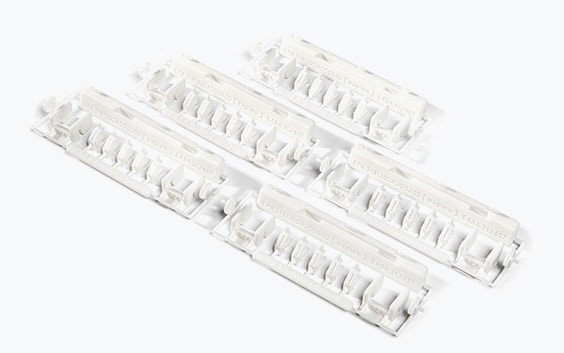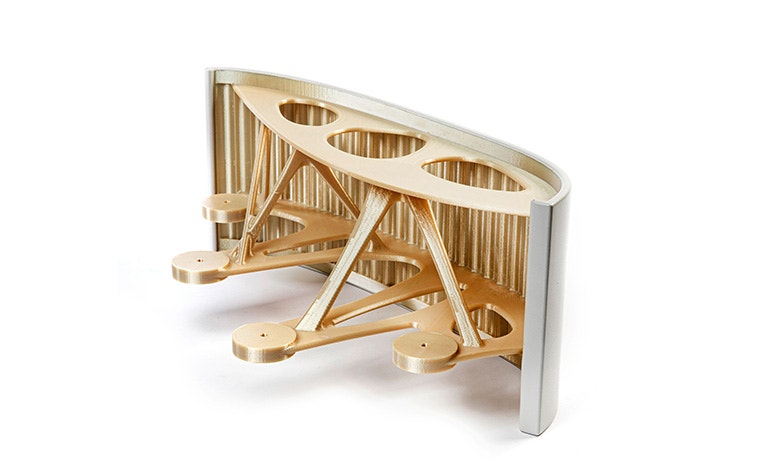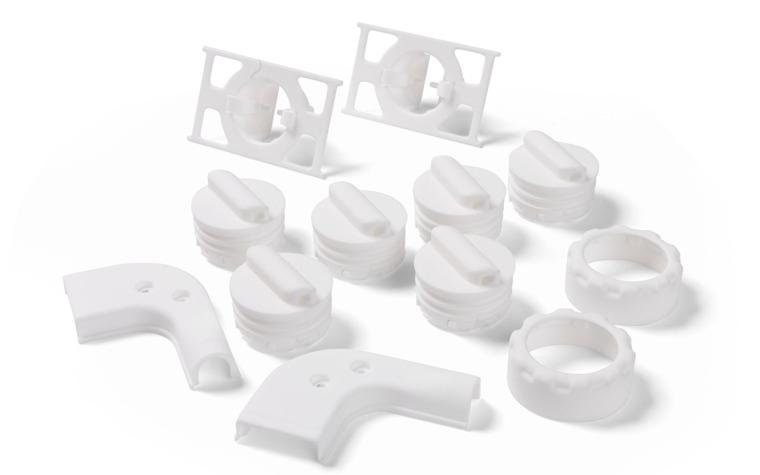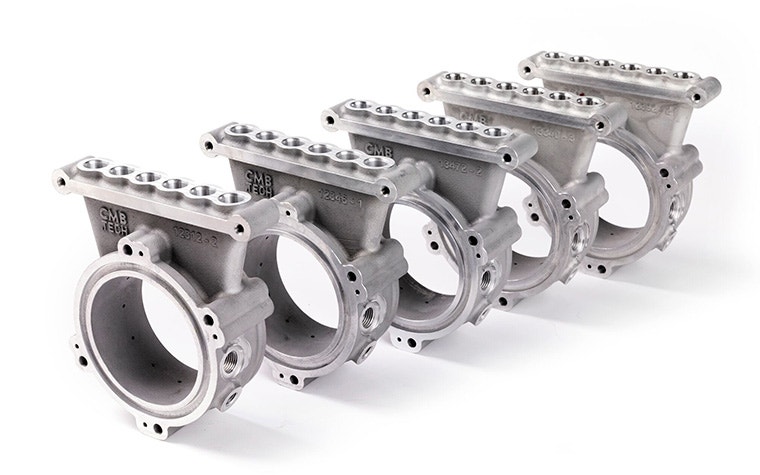
INTERVIEW
3DP&Me: Generating Trust in Additive Manufacturing through Transparent Process Control
Prototyping and series production are very different processes — the latter is much more than prototyping on repeat. What really sets them apart is the importance of cross-order consistency. Gert Brabants, Director of Materialise’s Series Manufacturing business line, sat with us to explain why transparent process control, data, and defined standards are key to providing it and generating widespread trust in AM.
Thanks for meeting us, Gert! Maybe you could start by telling us a bit about what you do and your journey in AM so far?
Certainly! Today, I am responsible for our series manufacturing business line here at Materialise — essentially, we take care of our customers’ end-use parts in all sorts of industries.
When I joined the company five years ago, I worked specifically in our aerospace division. Since that time, it's grown a lot, going from working primarily with Airbus to a wide range of aerospace customers. Part of that growth came from our efforts to lower the certification barriers for additively manufactured parts by sharing our process data and focusing specifically on process control.
What sort of data are we sharing?
You’re looking at process control data from the last five to ten years, gathered into what’s known as a data lake. We’ve been an EASA 21.G-certified production facility since 2015, so there’s plenty to share — for many materials, there are over a thousand data points from hundreds of production builds.
By opening up this type of data to our customers, they can rely on real-life performance data such as density, tensile properties, and more to support their design for AM. We aim to constantly update this data lake, making it a resource for decision-making.


Interesting! What was the thinking behind the decision to share that data?
We noticed that there is a lack of standardization in additive manufacturing at the moment. In many cases, designers do not have access to the same amount of data that they do for traditional processes, creating a gap in knowledge between AM designers and producers.
So, we started working on this process control and sharing our data with designers. We got a lot of positive feedback from our customers, both aerospace and otherwise, saying how this data helps them adopt AM — they all face the same issues.
So, what does process control look like at Materialise?
We begin by monitoring different parameters for each technology. With laser sintering, for example, we test density tensile values for every machine we build. It gives us a constant feedback loop of how our process is evolving. These values also decide our preventive and corrective maintenance actions, quality control, and so on. So, if we see the stability of the process is changing, for example, we can trigger corrective actions.
And how do you keep track of it all?
We link all of this to a process control document — think of it kind of like our internal ISO standard. It contains all the most important process parameters, fixed and locked. All the data we gather is based on this process, so if we change any of the parameters on that document, it means it’s a significant process change — the whole process needs to be rechecked, validated, and our customers informed.
Does this apply to both prototyping and series production? What is the main difference between the two?
Process and change control are really important differentiators between prototyping and series manufacturing. If someone orders a prototype, it will, of course, meet the part requirements that the customer defines, but in this case, we typically deliver one-off prints without any need for specific process or change control. If they order it again down the line, there’s no guarantee that the process behind it hasn’t changed in the meantime. That could lead to differences in aspects that the customer hadn’t pre-defined, like color or surface quality, which is why it’s crucial for customers to tell us if they later plan on taking their prototype into series production.
With series manufacturing, we focus on both part verification and process qualification. Our customers know for sure that if they test the first part and it works, we won’t change the important parameters in our production process without informing them. They know that they can expect the same result, whether it's the first part or the hundredth. Moreover, they can rely on a solid database of several thousands of data points that are directly related to this particular process.


Why is it so important to have a consistent process?
Generally speaking, AM is still considered something of a risk in terms of reliability and consistency. The only way to show that it isn’t is to provide very good process control and sufficient data to prove it and create that trust.
Aerospace is an easy example because it comes with all the additional part certification. Design organizations need to prove to the aviation authorities that this technology is good enough, that the parts are strong enough, and so on. But it’s not exclusive to aerospace — customers from all industries rely on these parameters.
Speaking of these parameters — can we now guarantee the same consistency with AM as with traditional manufacturing techniques?
It depends on what part properties you’re looking for. Some will always have a wider variance than others, and that’s more than acceptable for most applications.
As I said, the real struggle is still the perception a lot of people have of AM, that it’s not consistent or it’s not reliable. And sharing data is one of the ways we can prove to our customers that is. By doing so, we are making an important statement to the market, saying, “Look, we can produce these parts reliably and consistently.”
The Process Control document is then a way to ensure the validity of the data we want to share. The data is only valuable if it comes from a consistent process. We could collect process data every day for five years, but if we’re always switching parameters on the machines, you still won’t know what you’re going to get.
How does that transparency add value for our customers?
It’s really important. Imagine your customer checked something internally based on the first part they received, and it works for their application; then, we change a parameter on our end. Even if we don’t notice a difference in our process, it could still affect the way they intend to use the part.


So, it’s not just about one part or one machine. It’s raising awareness about the technology as a whole. Why is it so challenging to change that perception?
Yes, and that really is the big difference between AM and any traditional manufacturing method. Those have databases, ISO standards, handbooks that designers and engineers can use to design their parts. There are no, or at most very limited, ISO standards and databases with all the different process parameters and material properties for additive manufacturing.
So, it really depends on the process. And the process is not standardized across the industry because there is no standard. That’s why we’re trying to accelerate this by putting forward our own and sharing it with our customers.
Is all this information something you would share with the industry as a whole?
It depends. Specifically for aerospace, for example, we are part of a working group for the US and European aviation authorities. We get together with a lot of designers and producers in additive manufacturing to work on an industry-wide standard. But it's a slow process because, of course, everyone has to share what they’re doing first, and then we have to put all those processes at the same level. We believe our data lake will make a big difference there as an intermediate step towards industry-wide standards.
What impact has this had on our customers so far?
We see more and more of our aerospace customers specifically refer to our process because they trust it as a guarantee. They want us to produce the part according to our process control document. Instead of each customer putting together their own limited qualification program, which is always costly and quite limited in scope, this also allows them to base their design process on our process control data.
And, last thing — what are your hopes for the industry as a whole?
Long-term, I want to see the industry develop a universal standard for AM that is reliable and trustworthy enough for most companies to consider it without seeing it as a risk. To many of them right now, it’s still an unknown — they need the data, the databases, something like an ISO standard. They don’t always know how to start with AM.
The only way for us to change that is by sharing what we have — our data lake, our process and change control — and proving that we can give them the consistency they need.
Share on:

Biography
Gert Brabants, Business Line Manager, Series Manufacturing, Materialise
You might also like
Never miss a story like this. Get curated content delivered straight to your inbox.
